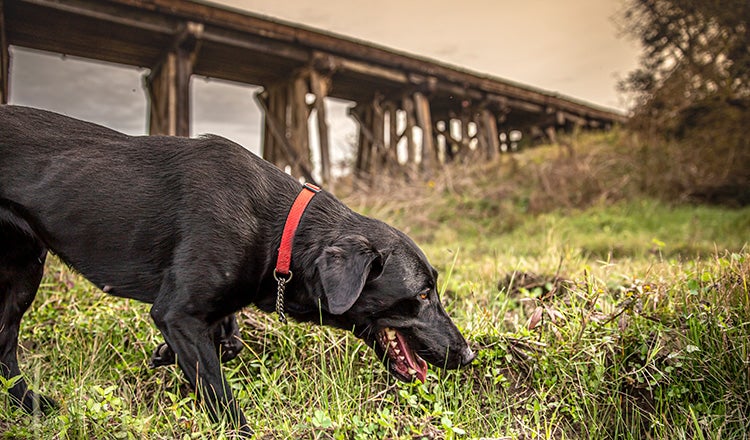Innovative Cultural Resources Solution Featured in Railway Track & Structures

A railroad bridge over the Bonnet Carré Spillway near Norco, Louisiana, needed to be replaced. But there was a problem: A tenuous oral history potentially placed a Civil War-era cemetery in the project area.
The Louisiana Division of Archaeology proposed excavating the entire site — an expensive, time-consuming process that would have significantly impacted the project’s budget and schedule. Instead, the environmental team implemented an innovative solution: A combination of cadaver dogs and ground-penetrating radar, a cutting edge tool to detect even ancient burial sites. The dogs can detect the odor of human remains up to six feet down — even from thousands of years ago.
The endeavor was a success. On a sunny day in January, the team conducted the field analysis, and although the dogs detected the odor from human decomposition it was from outside of the project area. The team confirmed there was no Civil War burial site at the project location and the project was able to proceed as scheduled.
Two of our experts wrote about the project for Railway Track and Structures. Zack Overfield, MA, RPA, is HDR’s cultural resources practice leader for the south-central region and a senior archaeologist/principal investigator. Amber Robinson, PWS, ENV SP, was HDR’s project manager and is an environmental scientist. The two shared takeaways from the project along with Kari Harris, environmental impact manager and project manager for Canadian National and the chair for AREMA’s Technical Committee 13.
Read the article in Railway Track & Structure’s October 2022 issue.



